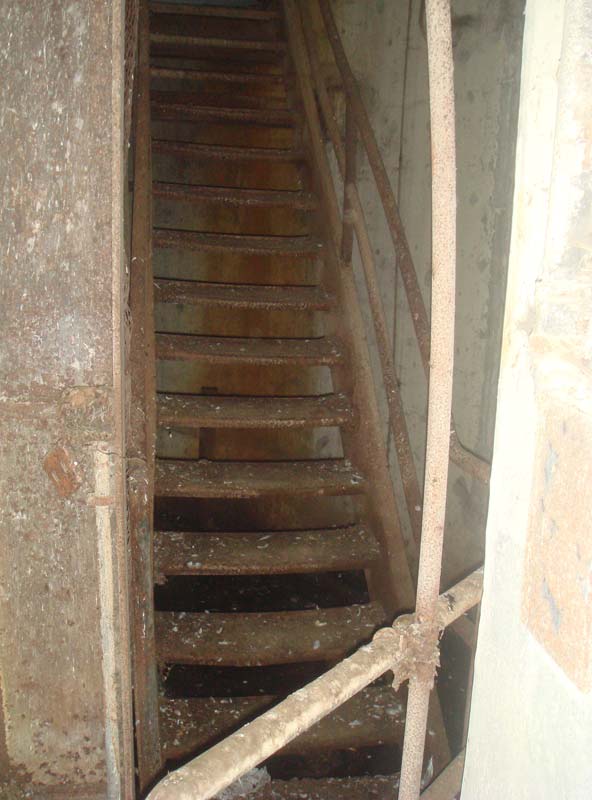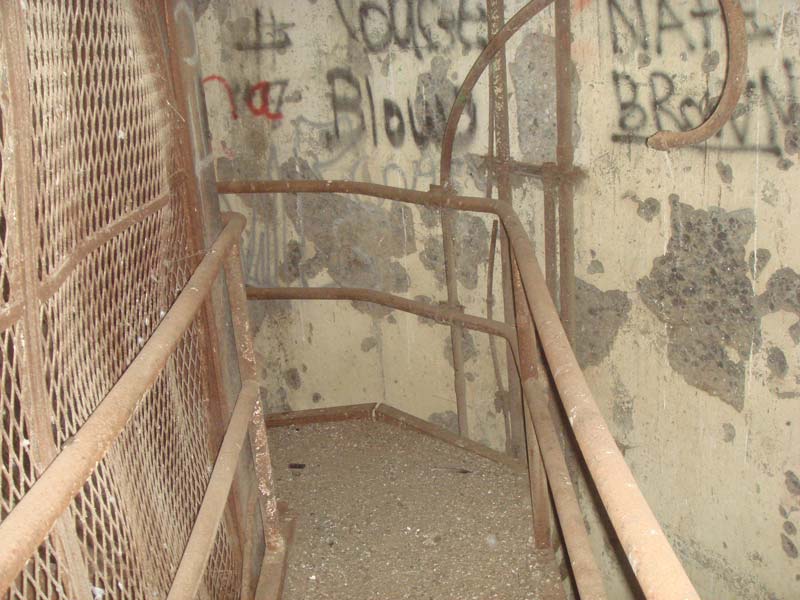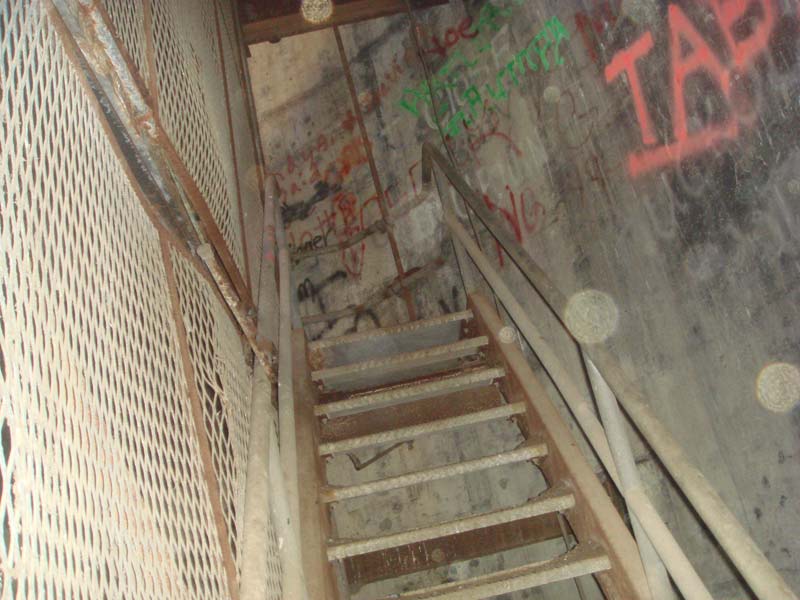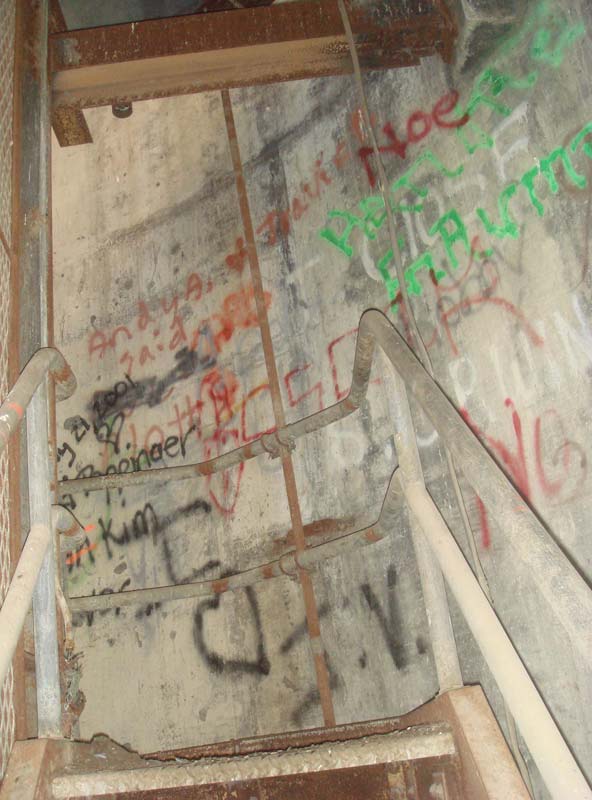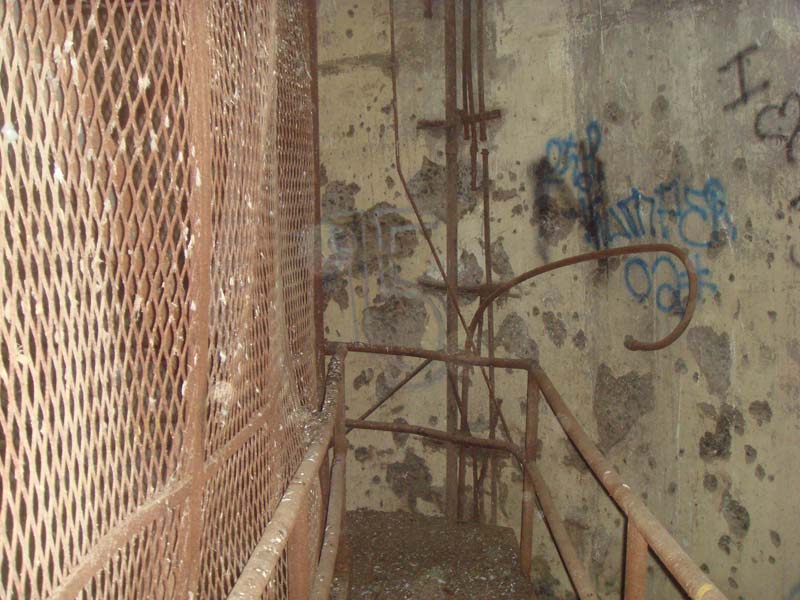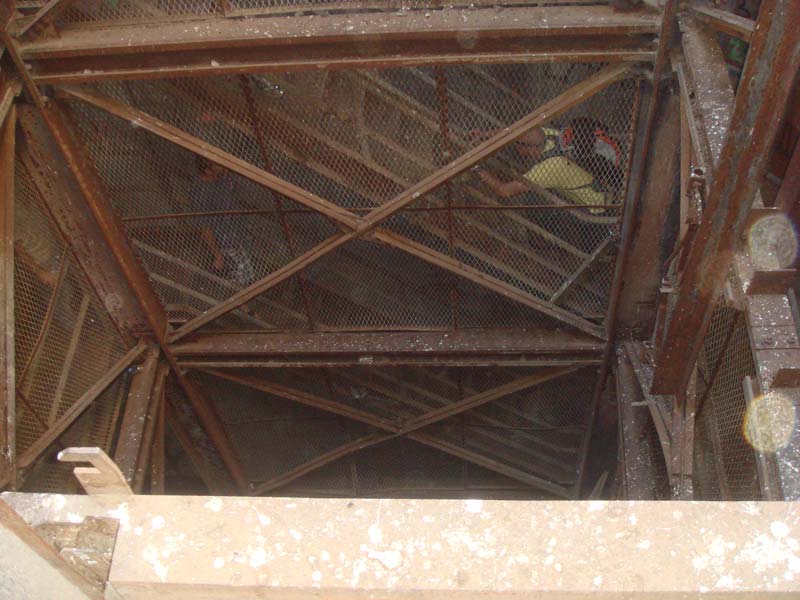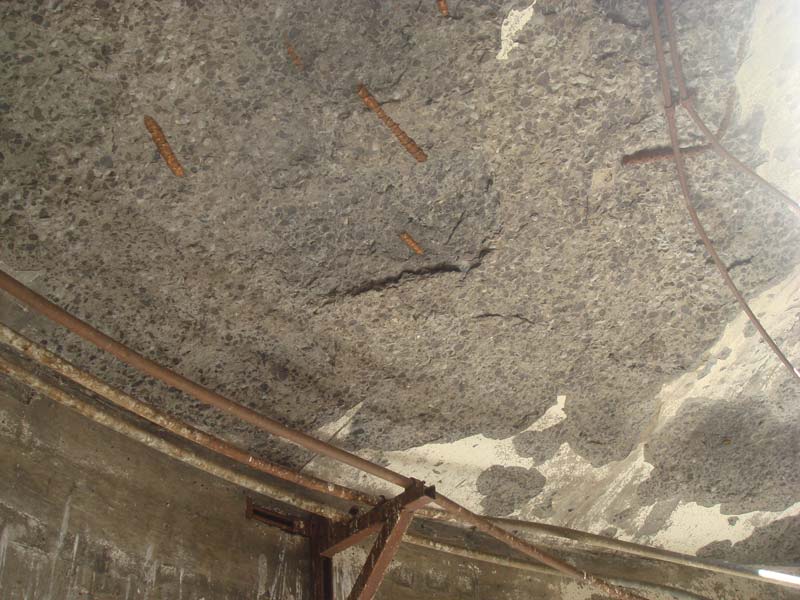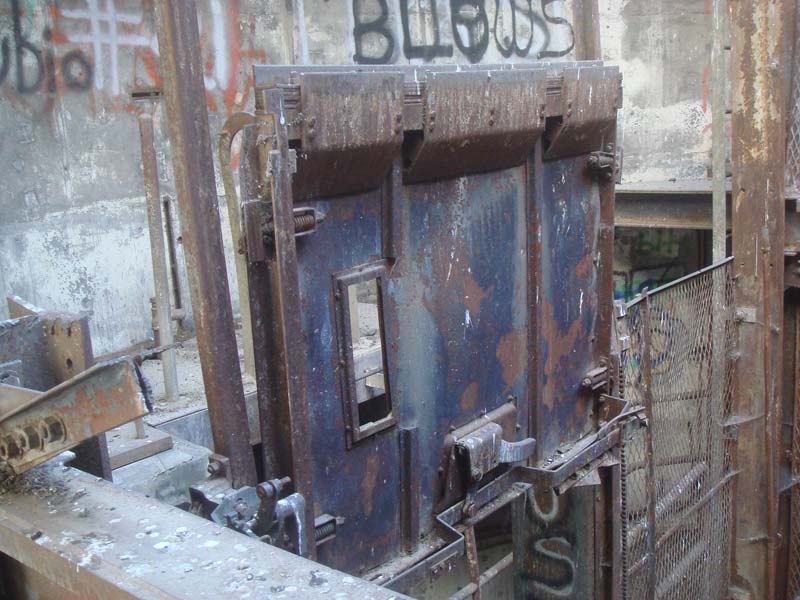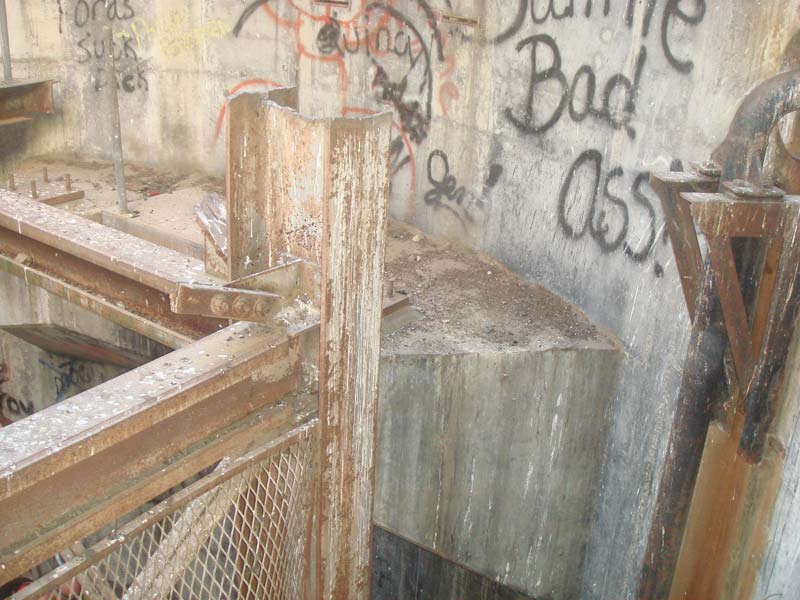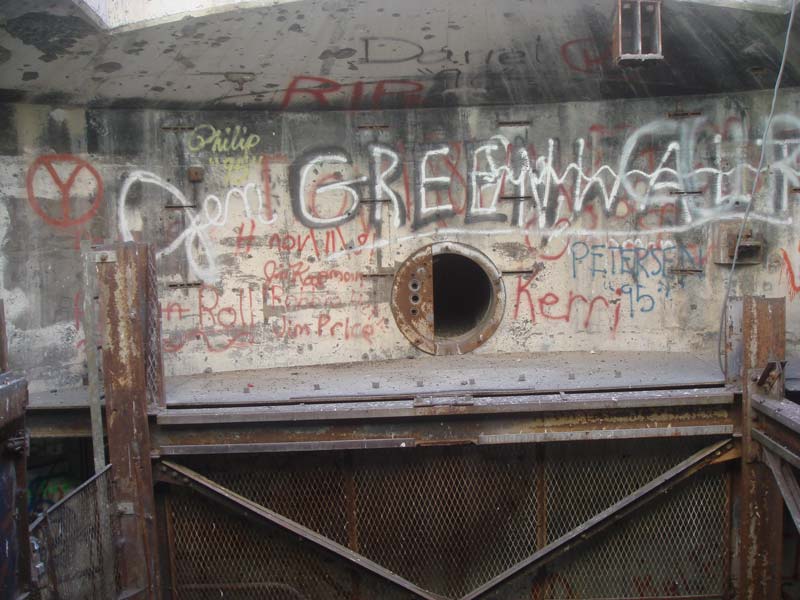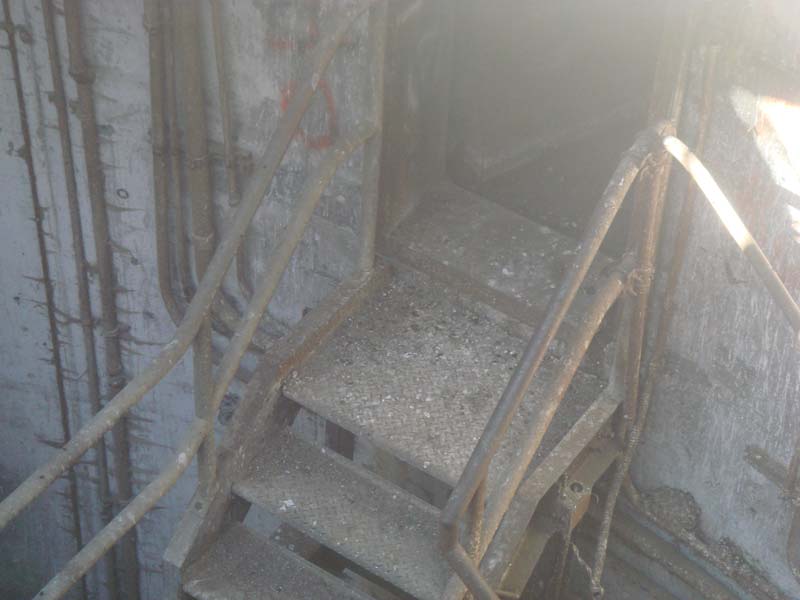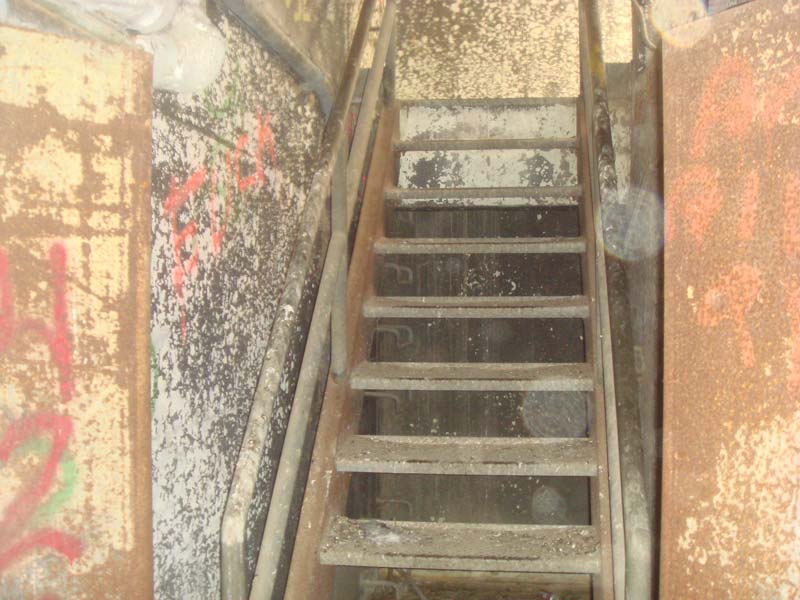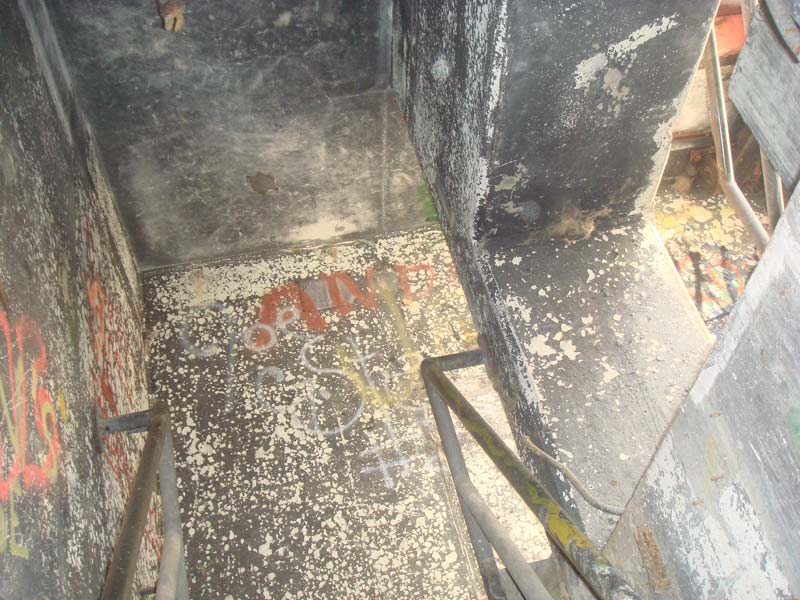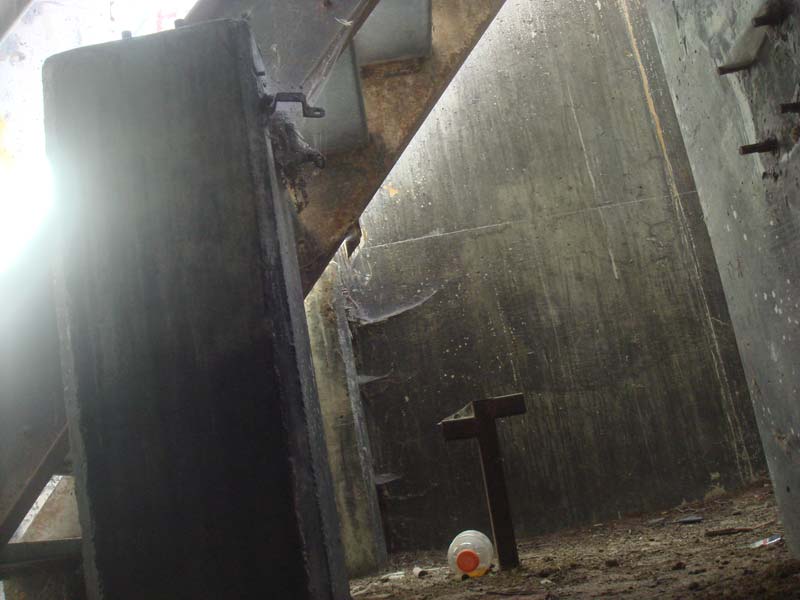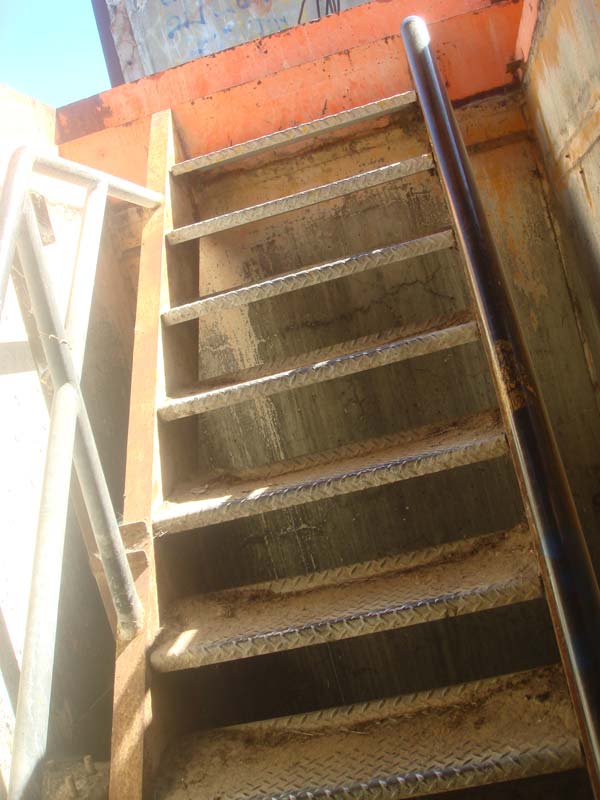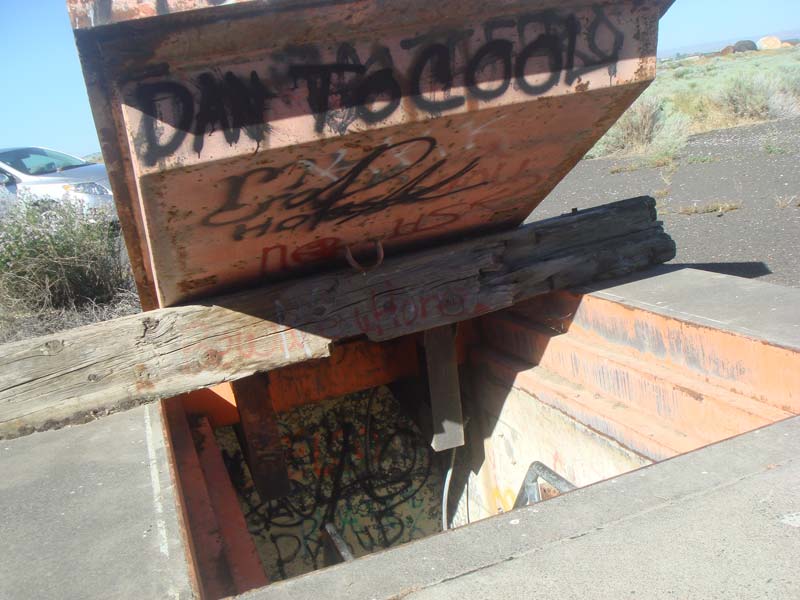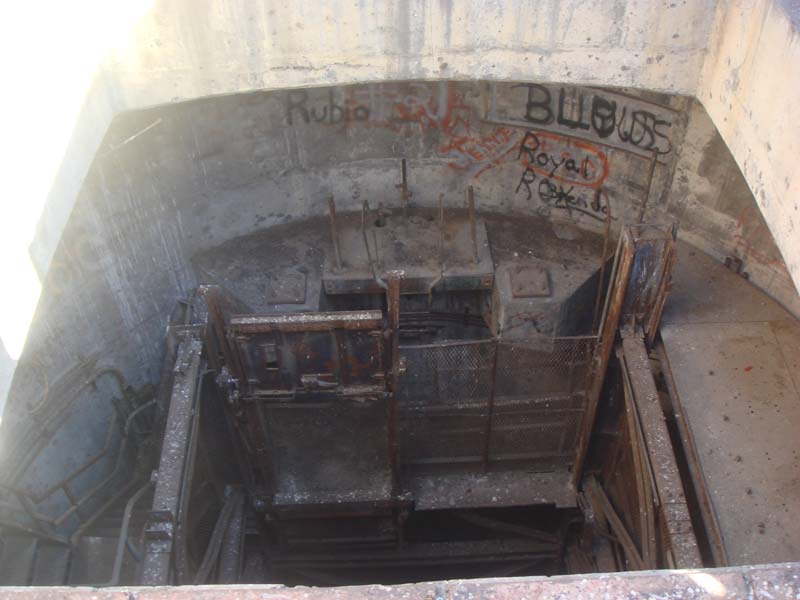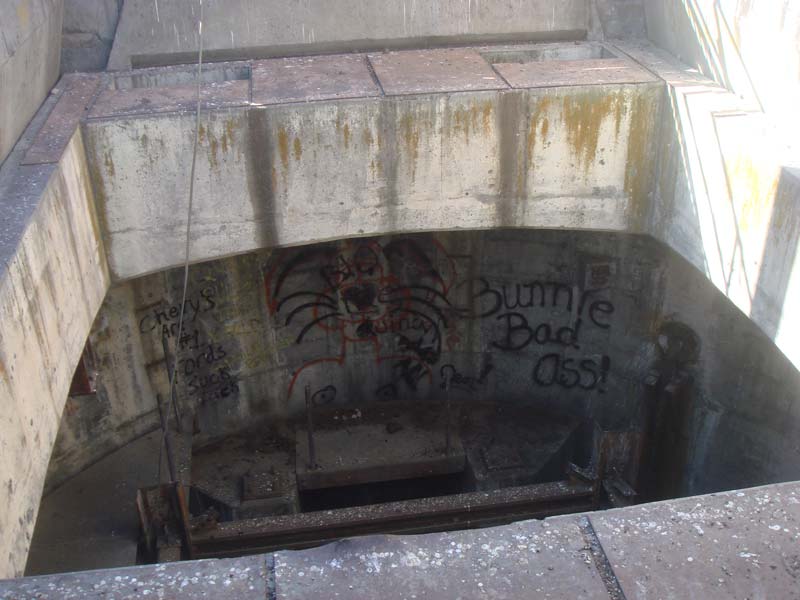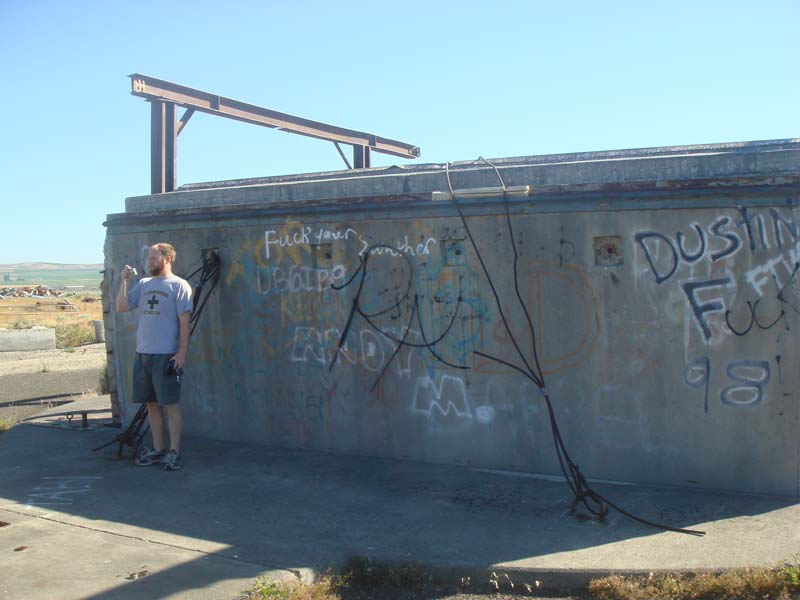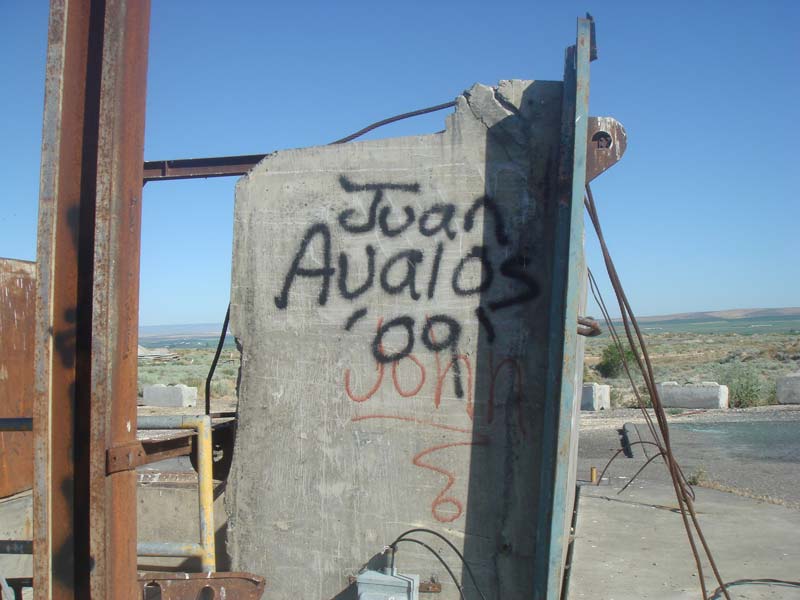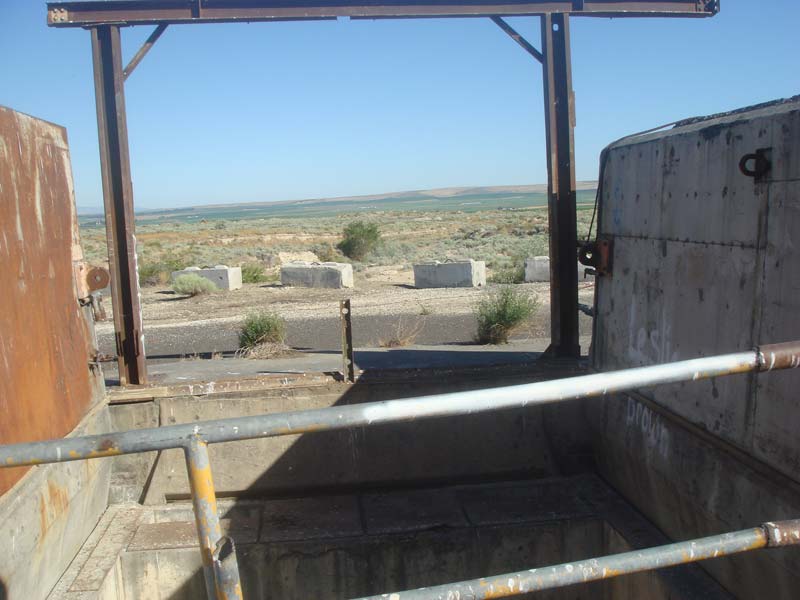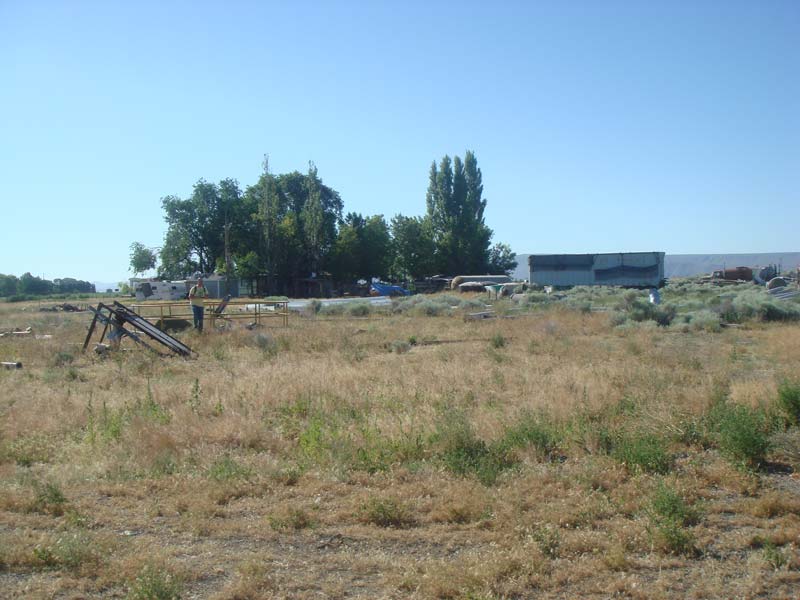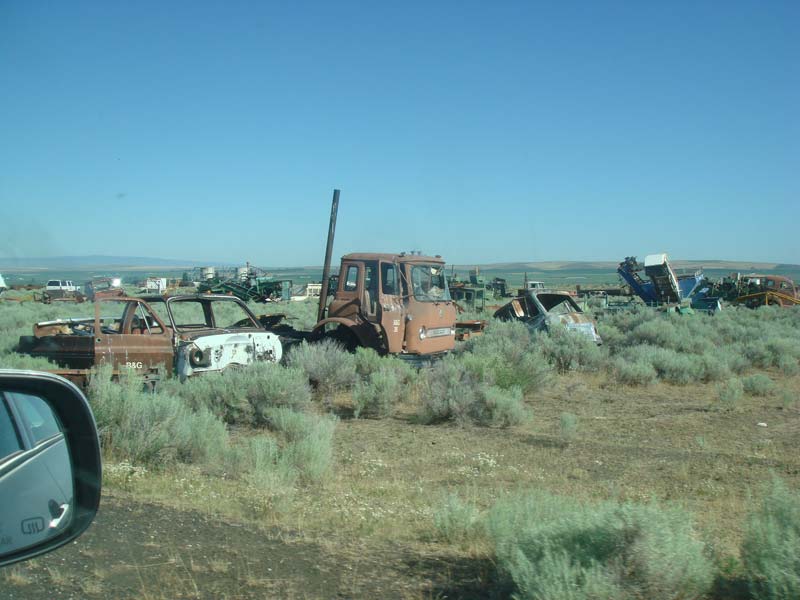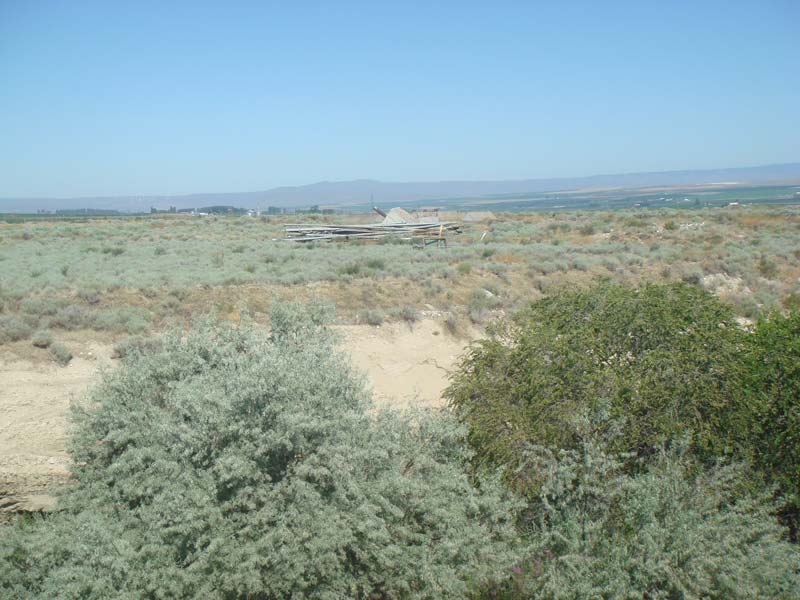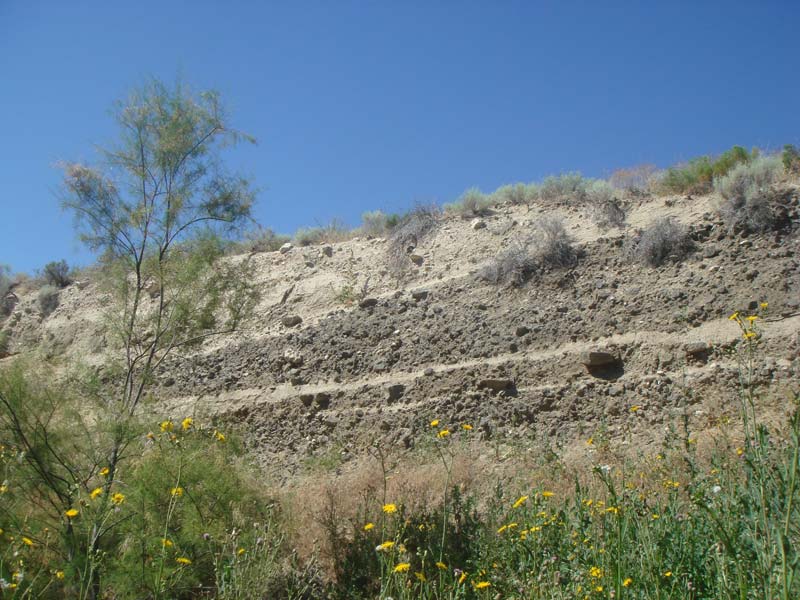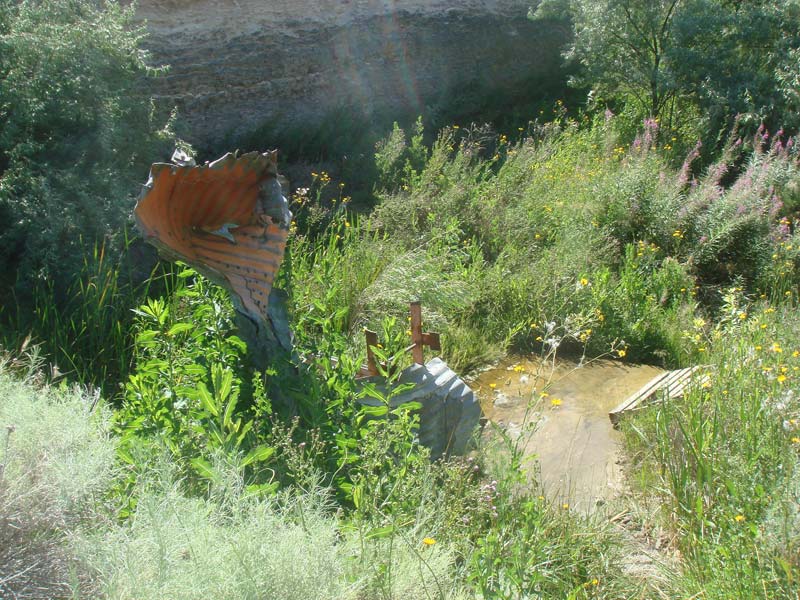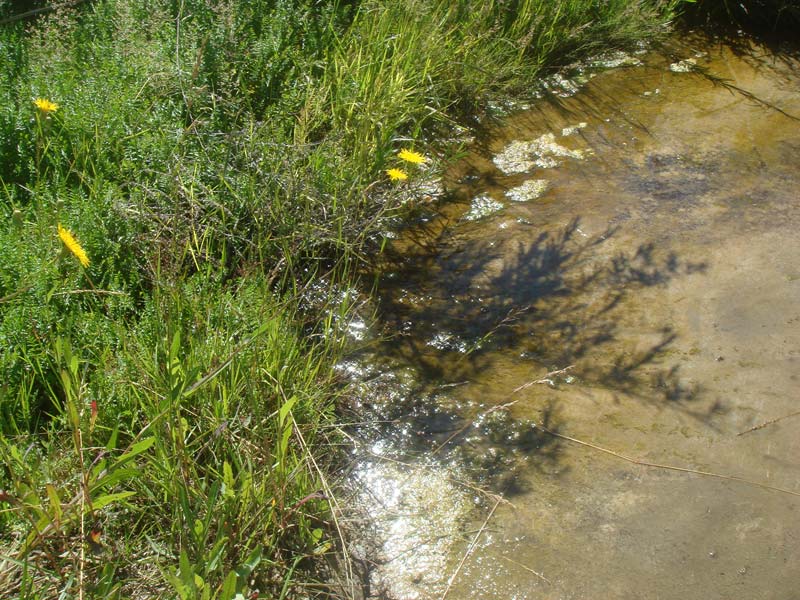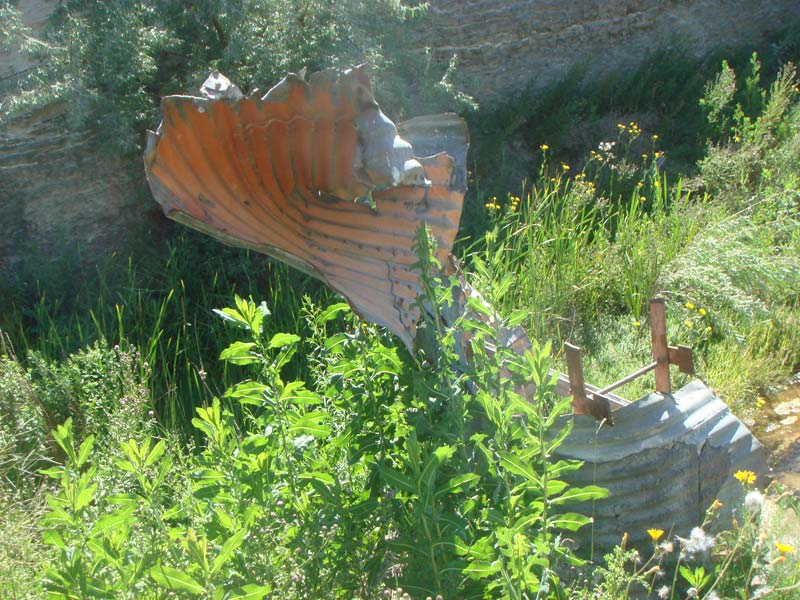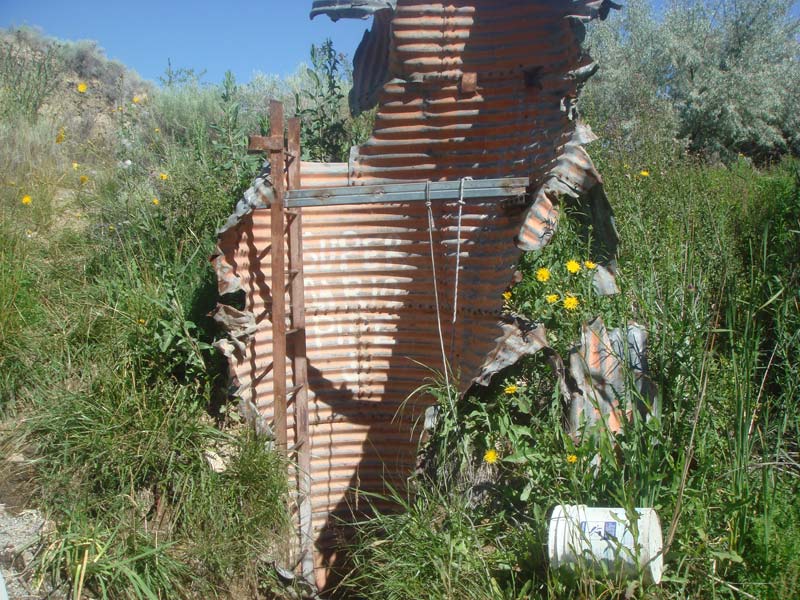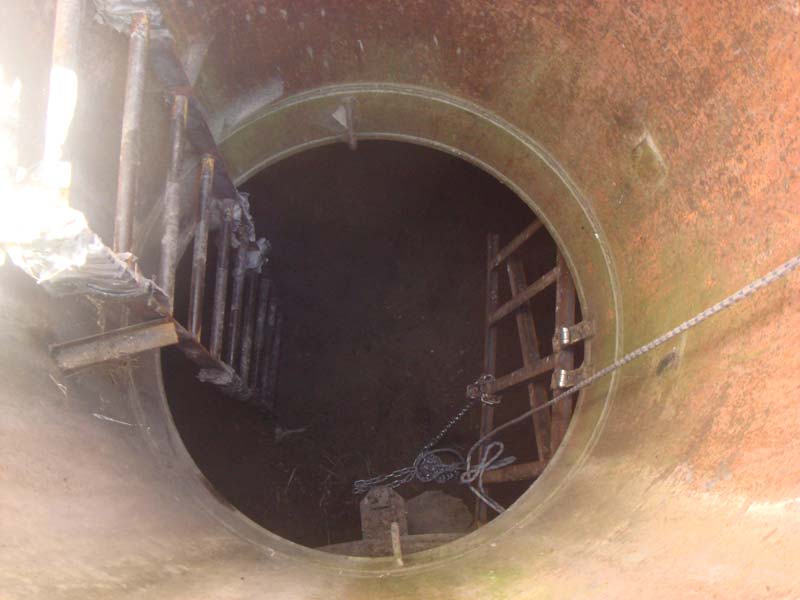
|
|||||||||||||||
|
This Adventure:
_____________
Part 07 _____________
|
|||||||||||||||
|
Stairway to Pigeon The group assembled at the vestibule of the entry portal where once again the ammonia reek of years of accumulated pigeon waste infiltrated our hapless olfactories like an ice pick. We took our parting shots amidst the swirling clouds of dried excrement, dander and feathers that were cast aloft with every step on the plush carpeting of turd that had been so deftly laid over the entire area by the invading hoards of pestilent, flying rats also known as rock doves or Columba livia-- the common pigeon. To us however, I believe they were known as "those damn birds" as they had infested and beplagued every single opening to the surface eliciting an intractable revulsion within me for the species that I may well carry to the grave.
The others ascended, with me in typical fashion, lagging far behind as I took more photos and suppressed my breathing as much as possible in the foul air. Even given my enthusiasm for silos and all things Titan 1, I was loathe to linger in the avian-infested areas of the complex knowing full-well what abhorrent pollutants floated about thickly on every air current and penetrated my lungs with each hesitant breath.
The stairs had taken quite a beating in the ensuing years since the site's closure. The treads here and there were bowed as though they had sustained a great blow from from a terrible weight and the railings too were bent and misshapen from some great force roughly applied. I imagined great chunks of steel falling from above and crashing down the steps, and sections of pipe dropping onto the railings as the site was hurriedly torn asunder in a frenzy of salvage.
Here and there, spent shotgun shells poked up through the bird crap underfoot and I was again surprised at the amount of damage done by gunfire to the high-strength concrete from which the entry portal was constructed. Fist-sized chunks were missing from the walls, and though I realize that I've mentioned it before, I still cannot help thinking just how completely insane it must be to fire a weapon in a giant ricochet chamber like that! Everywhere I looked there was damage, making it clear that hundreds and hundreds of rounds had been fired off inside the entry portal, leaving wounds so grievous that they exposed the reinforcing steel underneath.
The natural light in the portal silo was a double-edged sword in that it provided ample illumination making photos much easier but on the other hand it also revealed just how much filth was flying about in the air. Why wasn't I wearing my damn respirator down there?! Some sort of male bravado perhaps? Was it the inconvenience of having something strapped to my face making speech difficult and scratching my nose impossible? Was it the misguided belief that my short exposure would be of no consequence? Was I just stupid?
Actually, I hadn't really anticipated the birds so much, but that's no excuse as the presence of copious amounts of airborne asbestos fibers throughout the dry areas is more than enough reason to don not only an appropriately-rated respirator but a full suit as well to avoid contaminating every place I go after leaving the site. I'll go with stupid; that seems to be the best explanation for it.
The damage increases as one nears the top of the silo where apparently most of the shooting took place. As the bent and twisted stairs wind their way toward the light, the rhythmic sound of my footsteps on the metal treads resounds with an uncanny familiarity. The same metallic sound can be heard at the sites in California and Colorado.-- it is exactly the same no matter which site you happen to be visiting.
The entry portal elevator structure-- which occupied the center of the silo was mostly intact until the very top where it was cut off some 12 feet or so below the surface. The elevator car, motor and hydraulic pumps and accumulators were removed at this site. Only the vacant doors remain leaving the lift permanently out of service.
Likewise, the hydraulic rams and piping are also long gone, leaving bare outcroppings of concrete where the door opening mechanism was once installed. These "outcroppings" were called "pillow blocks" and once bore the tremendous weight of the doors during the sites' operational period. Now they only support dirt and bird droppings.
The final 30 feet of the entry portal hides the access tunnel to the instrument tube array and the hydraulic platform for the silo doors. Almost nothing was left behind at this particular site. The air improved as I neared the surface, and I breathed a bit easier. The pigeons-- scared off by our intrusion, were mercifully absent here. In other areas, we would (myself especially) not be so lucky.
The upper reaches of the silo gave way to the usual tapestry of vulgar and puerile graffiti which in this case was so thick most of it overlapped and blended into one big poorly-articulated mess.
Once I arrived at the place where the revolving door had been, the walls became scabrous and flaked with what looked like flat black paint. Though much of it had fallen away over what I assume has been decades, it was clear that the last set of stairs to the surface had once been bathed in flames and that the black paint was in fact the sooty aftermath left by vandals.
Not much more to be said about this area other than that it appears to have been repeatedly cleansed by fire over the years by fun-loving delinquents. At least the stairs don't seem any worse for wear from the whole ordeal.
Back on the surface, we breathed easier and poked about among the junk and weeds a bit before heading off to the much-awaited entrance to the launcher area of the complex. Looking down the open portal silo at the bird crap and destruction below makes me a bit sad to see how it has all gone to waste. On the other hand, I am deeply pleased to see a Titan 1 site that is open to the world where people can actually see firsthand just how enormous and awe-inspiring these places were and still are. I have always wished that somehow one of the Titan 1 sites would be rescued-- would be saved from slow destruction and decay and be cleaned up, restored to some degree and become a museum of cold war history. That wish is shared by many I've talked to, each of us holding out hope that somehow a site will be reborn as a public place open to everyone with an interest in the Cold War and it's terrible buildup of terrifying nuclear arsenals. Seeing the portal doors open was interesting and it really brings home how tough these sites were built when you can see just how thick the doors really are. It's insane.
Hundreds of TONS of concrete and steel form the twin monoliths of the silo doors-- laughably tethered with insubstantial- looking steel cable that provides a modicum of a false sense of security that such rusted tatters could ever hope to stop something that size if it were ever somehow to be put into motion. For safety's sake, the owners would like to close these doors, but it appears that no ordinary crane would be up to the task and that hiring one of sufficient stoutness could be a pricey affair. As with many of the sites, attempts to thwart entry by blocking, covering and otherwise closing up entrances by quick-and-dirty methods has proven to be largely ineffective. Most attempts are quickly defeated or are hammered away at over time until they give in to the persistent efforts of the curious. Three sides of the portal silo are protected from the unwary, but the fourth, as you can see below, could be quite a rude (and final) surprise to anyone wandering around the site in the dark!
The landscape around Larson 568-C has been rendered largely unrecognizable by the weeds, junk, derelict cars, trucks, farm equipment, numerous excavations and erratic topology of disturbed earth and scrap metal making it very tough to get my bearings even though I was standing on top of a major landmark. Where the hell was the power house air intake and exhaust? Where were the antenna silos and the launcher air facility intake shaft? The entrance to the rest of the complex was some distance away so we took the cars around what appeared to be more or less the original road to the launchers until we arrived at a giant gash in the earth as though it had been struck by the sword of Orion. A raw and gaping wound cut some 40 feet or more into the ground, the bottom not visible from inside the car. Instead of parking and walking the rest of the way we were a bit surprised when our guides turned into the narrow chasm and began descending a narrow dirt track into the earth. "There's no way to turn around down there", Walter and I remarked almost in unison. After some brief debate about whether or not to follow them into the chasm, we shrugged and Walter headed down into the breach. The walls of the descending trail were rough and telling of the unnatural state of soil that had once been completely disturbed, removed, replaced and compacted heavily. The very fact that the walls of that gouge had not collapsed or washed right down into itself is a clear indicator of just how thoroughly it had been tamped, rolled and compacted. Scrubby little trees and brush lined the dirt road we descended and below us we could see the divers getting geared up for their incursion. Neither of us possessed of any modicum of dive training or certification, Walter and I would be limited to travel by foot and watercraft through the flooded sections of the complex. There was, we were told, a small kayak available for our use in areas where the water was too deep to be crossed-- an absolute boon we would later discover. While the boys from the dive shop finished contorting and compressing themselves to don their wetsuits, Walter and I made cursory efforts to protect our cameras and other hydrophobic gear from the dampened depths of Larson 568-C. I made liberal use of zippered plastic bags in an attempt to save my video camera, 35mm Sony and Minolta cameras and their attendant batteries from the hazards of immersion and stowed them in my cheap backpack.
We stared up at the almost sheer walls of the Rift as we headed down toward an overgrown patch of weeds and small trees where we could see the others assembled around a soggy flat spot at the bottom of a narrow and slippery dirt path.
I'm talkin' 'bout Shaft Following the short, slippery path down a slight muddy bank, we arrived at the entrance to the rest of the underground complex. It was an interesting sight indeed. Rising from the ground was a jagged metal tube, the remnants of a corrugated steel tunnel liner that once had run over 30 feet higher than where we stood to an access hatch at the surface. It looked as though it had been blown open by explosives, the metal peeled back in sharp rending petals of steel. Inside, still welded in place, were the rusted rungs of the original ladder, cobbled together with other salvaged lengths to provide a reasonably safe descent into the shaft that was once the escape shaft for 568-C. Below lay the partially flooded concrete vaults of blast lock #2 and the water-filled silos beyond. There seemed to be some uncertainty as to why the escape shaft had been so rudely excavated. The guys from the dive shop said that the owner had not been aware that the monolithic concrete structures on the surface were in fact interconnected by subterranean tunnels and upon hearing of the presence of an underground facility, chose the site of the escape tunnel to have a closer look. We assembled around the shaft, stowing gear, checking flashlights and getting ready for what secrets lay hidden below. From somewhere further up, somewhere along the dirt road leading into the Rift, a spring flowed forth-- the source of the water we'd seen in tunnel junction #10 and the power house and launcher tunnels. It flowed past the shaft and over a ledge and out of sight beneath impenetrable weeds and underbrush. Looking closer, I realized that the ledge I was seeing was actually the concrete vault of the blast lock itself. We were standing on top of blast lock #2!
The marshy and algae-coated concrete pond that had formed was a waypoint of Titan Creek before it flowed on to infiltrate the launcher tunnels below and work its way all the way down into the ground beneath the power house floor. We each waited our turn to descend the ladder down into the cool musty chamber below. It was go time!
One by one we disappeared down the hole. Cool, sandy mud waited below and that old familiar smell greeted each of us once more. We were in it now...
Next up, we brave the weird underworld of flooded tunnels on our way to reach the sought-after cribwork of Royal City 568-C. What wonders will we find? What surprises lay in store?
|
|||||||||||||||

